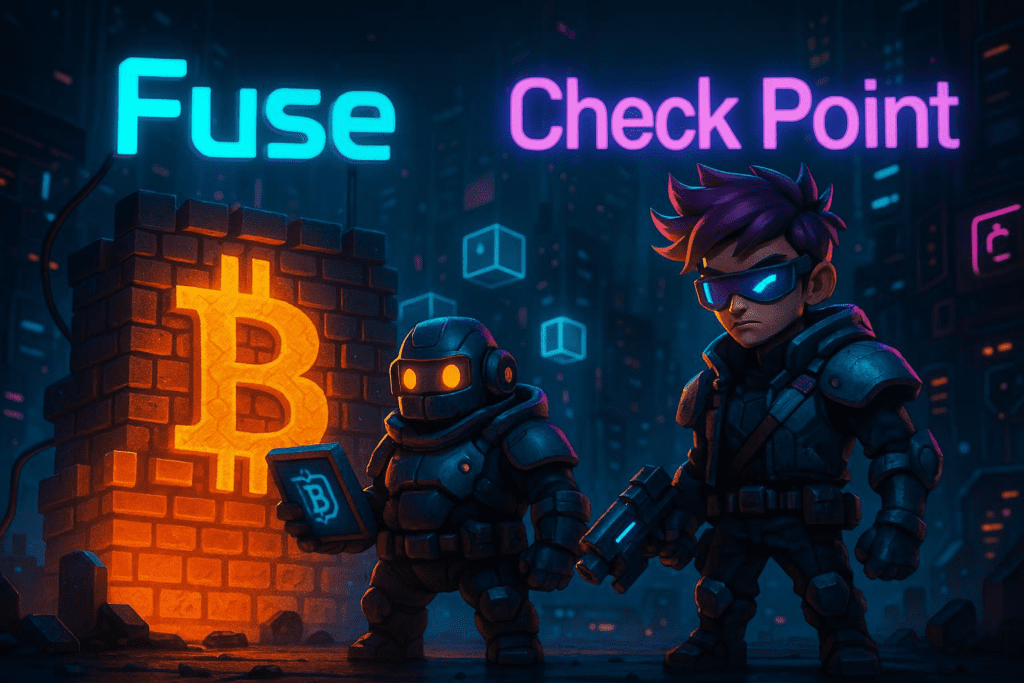Can real-time cybersecurity work in web3?
The blockchain ecosystem was defined by its ability to decentralize power. But in doing so, it also opened up to an increasing volume of exploits, smart contract bugs and attacks at the portfolio. This raises a central question: can real-time cybersecurity protocols, such as those used in web2 infrastructure, be implemented in decentralized systems?
Fuse, a layer 2 blockchain focused on cryptographic payments, believes that the answer lies in collaboration. On April 15, he announced a partnership with Check Point Software to deploy the first advanced blockchain firewall designed to prevent real-time threats. The move indicates a transition from reactive security to proactive defense.
Rather than detecting malicious transactions after their arrival, the partnership aims to stop them before execution. According to Fuse, the approach is based on the three decades of Check Point’s experience in terms of threats and technologies of firewall – now applied to a blockchain frame.
What makes this firewall different?
The traditional blockchain safety measures, such as intelligent contract audits and static code analysis, occur after deployment. These are essential but insufficient, especially since the attacks become more dynamic. The proposed solution is a firewall dedicated to AI that works at the infrastructure level, integrated on the network of fuses.
Mark Smargon, CEO of Fuse, explained the intention behind the movement:
“Prevention is always better than a remedy, especially with cryptographic networks which serve as a spine for world payments. With a control point offering a dedicated safety layer, we are convinced that we can not only dissuade the pirates, who are becoming more and more sophisticated, but pioneer a model of cybersecurity which will become the gold standard for the protection of web3 protocols. “
The security layer will take advantage of the prevention of the threats of owners of Check Point, which are trained on historical data and in real time to block the transactions reported as malicious. According to Dan Danay, head of security of the web 3.0 at the control point, this type of safety architecture reflects the evolution of static antivirus tools to surveillance based on real -time cloud in the traditional web:
“Like robust cybersecurity has fueled the rise of web 2.0, prevention in real time will be the key to the consumer adoption of web3.”
How the threat prevention layer works
Rather than operating as a simple list of well known players, the safety layer fits into the Fuse transaction pipeline to actively inspect the intention. It operates the threat engines fed by AI and the real-time data flows of the global Cyber-Point cyber-intelligence network. Fuse’s approach does not stop at intelligent contracts. Portfolio interactions, DAPP behavior and node communications will also be subject to live surveillance. According to the teams, this coverage is the key to reducing attack areas and allowing the confidence of developers.
The firewall will not act as a goalkeeper of decentralization but as an internal risk assessment tool. Developers, node operators and users will keep autonomy, but can opt for an additional safety layer baked directly in the protocol.
Pregnant nodes and the future of the Fuse network
The announcement comes shortly after the launch of the EMPER nodes of Fuse, a system of governance and validation supported by participants in the company such as Collider Ventures, TRGC and Blockchain Founders Fund. These nodes allow users to acquire property and participate in decision -making, a process that could be improved by the analysis of threats in real time.
With thousands of active users and an increasing number of stablecoin transactions treated daily, Fuse has chosen to create security in the heart of its infrastructure focused on payment. This is a notable difference in relation to the safety tools of the renovation after the scale. Hope is that by implementing this level of control now, the fuse can avoid the model observed in other networks – where vulnerabilities are only processed after their exploited.
Wider implications for web infrastructure3
Security remains one of the biggest friction points for the adoption of web3. Protocols like Fuse that prioritize security in terms of infrastructure can start to redefine reference expectations for operational security between chains. Although the fuse is currently focused on B2B and B2C payments, the model it implements with the control point could apply to other verticals: game, decentralized financing and supply chain platform.
It remains to be seen if the industry will be seen. But with an increasing regulatory examination and users demanding stronger protections, moving from prevention detection may not become a differentiating, but a requirement.
Final reflections
In my opinion, this partnership establishes a precedent for what blockchain networks should start to consider non -negotiable. Security should not be a feature, it should be an infrastructure. The integration of Fuse with Check Point does not concern the marketing of a firewall for the web3 public, it is a question of recognizing that defenseless decentralization is not durable in the long term.
If other L2S or Payment Blockchains follow the plunge, we can finally see a turning point where security architecture in Web3 begins to correspond to the financial value that these systems should move.
Do not forget to love and share the story!
Disclosure of acquired interests: This author is an edition of an independent contributor via our




